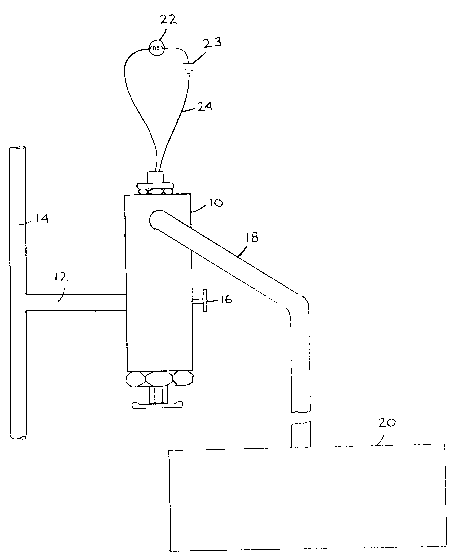Some of the information on this Web page has been provided by external sources. The Government of Canada is not responsible for the accuracy, reliability or currency of the information supplied by external sources. Users wishing to rely upon this information should consult directly with the source of the information. Content provided by external sources is not subject to official languages, privacy and accessibility requirements.
Any discrepancies in the text and image of the Claims and Abstract are due to differing posting times. Text of the Claims and Abstract are posted:
| (12) Patent: | (11) CA 2002808 |
|---|---|
| (54) English Title: | DEVICE FOR SAMPLING A CIRCULATING FLUID |
| (54) French Title: | APPAREIL D'ECHANTILLONNAGE D'UN FLUIDE EN CIRCULATION |
| Status: | Expired and beyond the Period of Reversal |
| (51) International Patent Classification (IPC): |
|
|---|---|
| (72) Inventors : |
|
| (73) Owners : |
|
| (71) Applicants : |
|
| (74) Agent: | DOUGLAS B. THOMPSONTHOMPSON, DOUGLAS B. |
| (74) Associate agent: | |
| (45) Issued: | 1996-02-20 |
| (22) Filed Date: | 1989-11-10 |
| (41) Open to Public Inspection: | 1991-05-10 |
| Examination requested: | 1992-10-22 |
| Availability of licence: | N/A |
| Dedicated to the Public: | N/A |
| (25) Language of filing: | English |
| Patent Cooperation Treaty (PCT): | No |
|---|
| (30) Application Priority Data: | None |
|---|
A device is provided for sampling the contents of a
pressurized circulating fluid system of a machine. The device is
incorporated in a parallel fluid circuit and comprises a housing
with an inlet to, and outlet from, a cavity. A filter is received
within the cavity. When the filter becomes clogged, a
differential pressure sensor provides an indication for an
operator to close the inlet to the filter cavity, drain the cavity
by means of a valve, and then remove the filter by removing a
plug. The drained cavity fluid and filter may then be shipped to
a lab for testing and the filter replaced and the inlet to the
cavity reopened.
Note: Claims are shown in the official language in which they were submitted.
Note: Descriptions are shown in the official language in which they were submitted.

2024-08-01:As part of the Next Generation Patents (NGP) transition, the Canadian Patents Database (CPD) now contains a more detailed Event History, which replicates the Event Log of our new back-office solution.
Please note that "Inactive:" events refers to events no longer in use in our new back-office solution.
For a clearer understanding of the status of the application/patent presented on this page, the site Disclaimer , as well as the definitions for Patent , Event History , Maintenance Fee and Payment History should be consulted.
| Description | Date |
|---|---|
| Inactive: Reversal of expired status | 2012-12-02 |
| Time Limit for Reversal Expired | 2009-11-10 |
| Inactive: Adhoc Request Documented | 2009-01-29 |
| Letter Sent | 2008-11-10 |
| Inactive: IPC from MCD | 2006-03-11 |
| Inactive: IPC from MCD | 2006-03-11 |
| Inactive: IPC from MCD | 2006-03-11 |
| Grant by Issuance | 1996-02-20 |
| Request for Examination Requirements Determined Compliant | 1992-10-22 |
| All Requirements for Examination Determined Compliant | 1992-10-22 |
| Application Published (Open to Public Inspection) | 1991-05-10 |
There is no abandonment history.
The last payment was received on
Note : If the full payment has not been received on or before the date indicated, a further fee may be required which may be one of the following
Please refer to the CIPO Patent Fees web page to see all current fee amounts.
| Fee Type | Anniversary Year | Due Date | Paid Date |
|---|---|---|---|
| MF (patent, 8th anniv.) - small | 1997-11-10 | 1997-11-06 | |
| MF (patent, 9th anniv.) - small | 1998-11-10 | 1998-10-06 | |
| MF (patent, 10th anniv.) - small | 1999-11-10 | 1999-09-29 | |
| MF (patent, 11th anniv.) - small | 2000-11-10 | 2000-10-24 | |
| MF (patent, 12th anniv.) - small | 2001-11-12 | 2001-10-15 | |
| MF (patent, 13th anniv.) - small | 2002-11-11 | 2002-10-31 | |
| MF (patent, 14th anniv.) - small | 2003-11-10 | 2003-10-21 | |
| MF (patent, 15th anniv.) - small | 2004-11-10 | 2004-09-01 | |
| MF (patent, 16th anniv.) - small | 2005-11-10 | 2005-10-04 | |
| 2006-10-03 | |||
| MF (patent, 17th anniv.) - small | 2006-11-10 | 2006-10-03 | |
| MF (patent, 18th anniv.) - standard | 2007-11-12 | 2007-10-31 | |
| MF (application, 2nd anniv.) - small | 02 | 1991-11-11 |
Note: Records showing the ownership history in alphabetical order.
| Current Owners on Record |
|---|
| FLUID LIFE CORPORATION (THE) |
| Past Owners on Record |
|---|
| JAMES E., JR. MULLIS |
| JAMES E., SR. MULLIS |